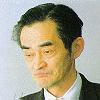- JST Home
- /
- Strategic Basic Research Programs
- /
 ERATO
ERATO- /
- Research Area/Projects/
- Completed/
- GOTO Quantum Magneto Flux Logic
GOTO Quantum Magneto Flux Logic

Research Director: Dr. Eiichi Goto
(Professor, Faculty of Science, Kanagawa University)
Research Term: 1986-1991
This project took a new look at the parametron which was invented by Eiichi Goto over thirty years ago. The parametron uses the Josephson junction, but operates on the parametron principle. The magnetic flux generated by a loop current in a superconducting metal at low temperature (app. – 270 ) is quantized (the smallest unit of magnetic flux generated by a current in a superconducting circuit). This project explored the possibility of realizing an ultra-fast computer using magnetic quanta as units of operation involving data handling.
Research Results
Basic understanding of the quantum flux parametron: The basic operation of a QFP circuit was studied. Good agreement was obtained, confirming the possibility of QFP applications as a very fast switching device.
16-Ghz operation of the QFP: It was demonstrated that QFP circuits can operate at a 16-GHz clock, 4 phase, equivalent to 64 GHz, as compared to 1 GHz of the fastest conventional Josephson junction devices.
New-type logic circuit based on quantum flux: Progress was made in defining a new-type of logic circuit based on quantum flux. Operation was experimentally ascertained on the elementary unit of a larger circuit. Logic design for a 4 x 4 multiplier was established using 64 x 30 (about 2,000) QFPs.
Three-dimensional QFP chip arrays: Theoretical groundwork has been laid for constructing three-dimensional arrays of QFP chips, as opposed to semiconductor devices which can only be built in two dimensions.
New architecture for a Josephson computer: A new computer architecture which is well suited for a Josephson computer, called a Cyclic Pipeline Architecture (CPA) and implementing a MIMD (multiple instruction stream multiple data) architecture, was developed.
New view of information theory: Theoretical calculations involving QFP devices have shown that it is possible to handle information in QFP circuits without heat generation and, therefore, entropy, if the circuit is running at a sufficiently slow clock.
New refrigerator for the QFP computer: The construction of a compact and reliable helium refrigerator for a QFP computer was realized.


Output spectra of the frequency divide by two circuit (1-bit shift register with bit inversion) when operating at a clock frequency of 16.2 GHz.

Distance from Center of the Sample (mm)
Sweeping of Trapped Flux in Superconductors Using Laser Beam Scanning














